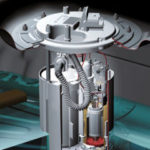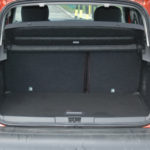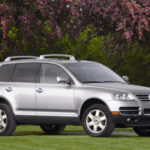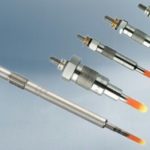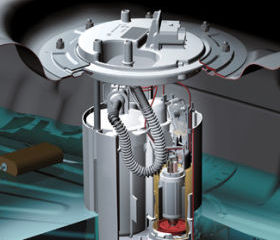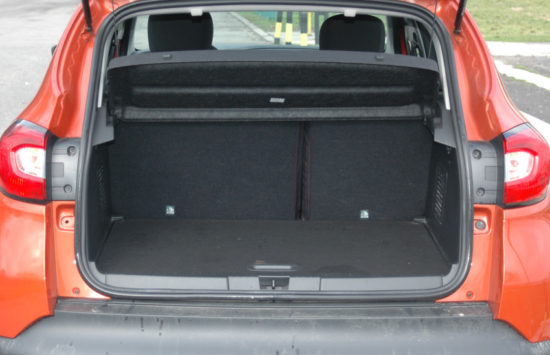Water injection into a turbocharged engine
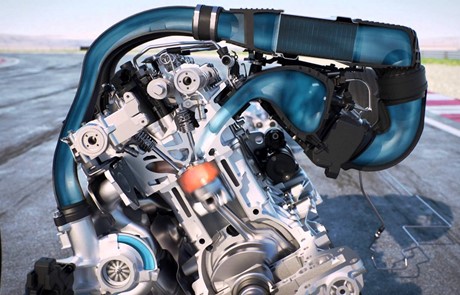
The 1943 invention of the fighter plane increased power by 16 percent
Many were surprised when the BMW M4 was introduced as the official 'safety car' in MotoGP in February, with water injection boosted from 431 to 470 hp, and even more so when it was at the Concours d'Elegance in Pebble Beach (11th to 16th). August 2015) shows the market BMW M4 GTS with as much as 500 hp, according to the same recipe, it is a well-known technology to improve charging and prevent detonation combustion. Namely, in order for the gasoline engine to be efficient, it is necessary, in the second stroke, to compress the mixture of fuel and air as much as possible. But if overdone, the mixture can explode uncontrollably, detonatingly…
… Before the piston reaches the top dead center (GMT), ie the spark on the spark plug jumps. If you caused the metallic clang of the engine by suddenly adding gas, at lower revs and high loads, that's it! You heard the impact of pistons and links on the cylinder walls, which are the result of detonations. It is a premature, irregular and explosive combustion, which can literally destroy the engine. A few minutes of such work are enough to break off a part of the piston and the valve, break the forehead of the piston, break the connecting rod, crush the bearing, destroy the crankshaft…
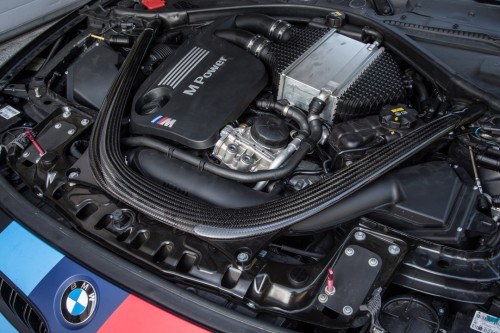
When combined with a larger turbocharger, power can be increased by up to 40 percent, as in the II. but with the risk of overload
This is especially risky and dangerous in the case of precharged engines, which at the beginning of the compression stroke, when the piston is in the dead center (DMT) have no underpressure, caused by the suction effect of the mixture in the first stroke, as in intake (atmospheric) engines. In a turbo engine, the compressor, which is driven by a turbine and which is driven by the flow of exhaust gases, then creates overpressure. This is what we often refer to as a "precharge pressure", which can be less than 0,4 bar and higher than 2 bar (for sports engines). Then the piston, moving from DMT to GMT compresses (shortens)…
… Already compacted mixture, so the temperature of the mixture can rise to more than 300 degrees Celsius. The fuel can then detonate uncontrollably, which we solve by using high-octane fuel, and the octane number shows the resistance to detonative combustion (higher OB, higher resistance). Here we return to the beginning, because the technology in question is professionally called ADI (anti-detonation-injection), ie "injection that prevents detonations". Water has a dual role here. On the one hand, it reduces peak temperatures by 50 to more than 100 degrees. This allows additional charging of the engine, and therefore more power.
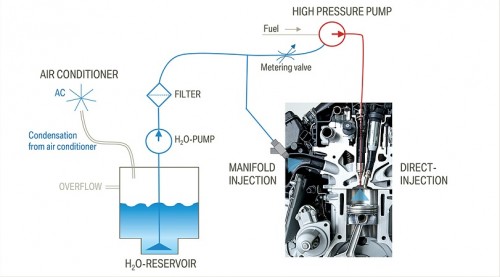
Water is injected from the 5 liter tank into the intake manifold with air pre-filled to 1,6 bar, which is cooled by evaporation and can be more inserted into cylinders
The temperature is subtracted by changing the physical state from liquid to gaseous (the air conditioner works on the same principle), and the volume of water particles, which turn into steam, increases by more than 150 times. This further increases the pressure in the cylinder (higher pressure - higher efficiency - higher power - lower consumption). So, it is clear and has long been known that this technology increases the engine power of the BMW M4 by 13 percent (in World War II aircraft, in the fight to the death, by more than 40 percent), while reducing consumption by about 2 percent . But it is neither easy nor safe for the engine…
… Because, with the increase of pressure and temperature, the load of the most loaded parts increases. Therefore, they should be made of higher quality and more durable materials, with greater precision and less tolerance in assemblies, which significantly increases the cost of production. One BMW can afford it, especially in the M4 GTS version, but don't think that Dacia… A will get into it. Daimler, or 'Mercedes-Benz', which has a 'thick' experience with this technology, will certainly enter the 'game'. from II. world war. Detonative combustion is mostly affected by the degree of compression and the octane value of the fuel. Increasing the degree of compression increases the efficiency and economy of the engine.
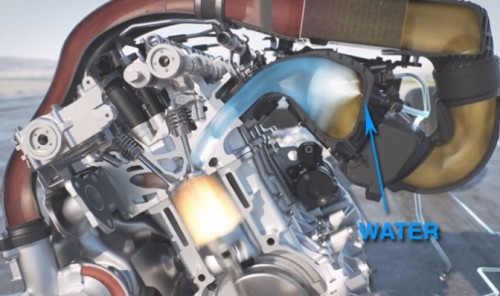
Injecting water into incandescent cylinders achieves a double effect: it reduces the risk of detonant combustion and increases the pressure in the cylinders by its rapid evaporation
That is why modern petrol engines have a compression ratio of more than 11: 1 (12,5: 1 is realistically possible, and everything above is a 'trick'). At a certain degree of compression and fuel, detonation combustion will occur sooner if the higher the engine load, the higher the intake mixture temperature, the higher the pre-ignition angle, the lower the speed, the higher the coolant temperature, the richer the mixture, the lower the moisture content and the higher the soot content. engine. The appearance of detonations is influenced by the inhomogeneity of the mixture, and the problems increase in the turbo versions. Glowing combustion products spread very quickly, creating a pressure wave of sound speed.
This heats and compresses the unburned mixture, which is heated twice - by hot combustion and pressure rise. This encourages the creation of a source (of one or more) of sudden, explosive combustion, in the places of the highest temperature (near the exhaust valves and soot deposits). A sudden increase in pressure and temperature is most dangerous for aluminum pistons, because they have a melting point at (655 to 710 ° C) and lower strength at elevated temperatures. The problem is increased by the difficulty of cooling the pistons, because their heat is dissipated only through the ring and the oil jet from below. When the water injection system was installed, in addition to all the above, an additional and most effective tool for combating detonations was obtained.
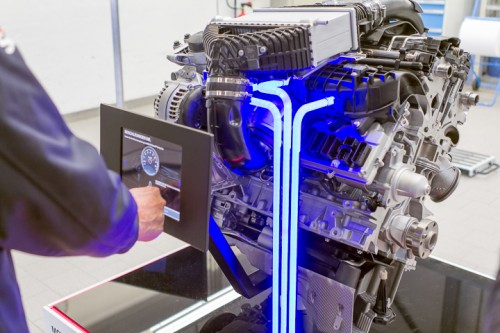
Pipes through the electric pump and injectors supply water to the suction manifold at a pressure of 2-3 bar, thus creating the conditions for optimal evaporation
Therefore, with the water injection system, good monitoring of all parameters of combustion and engine operation is necessarily connected. The benefit of the system is that the ten percent higher pressure is released much earlier, immediately after the piston, in 'working clock', starts from GMT to DMT. Atkinson cycle engines, such as those used by Mazda and Honda, solve this problem by having the first 20 percent of the compression stroke with the intake valves open. The pressure does not increase, ie it starts to increase only when all the valves are closed. The detonation combustion sensor also helps prevent detonations - when it detects detonations, it gives a signal for increased water injection.
6 - 4 l / 0,1 km of water is injected into the intake pipe of the in-line 0,8-cylinder turbo petrol with direct injection of the BMW M100 MotoGP Safety Car, so its power has increased from the standard 431 hp at 5500 / min to 470 hp. . Testing since February has confirmed its effectiveness, so it will be boosted to 4 hp in the market M2016 GTS, which arrives in March 500. The maximum torque will increase from 550 to 600 Nm. The known effects have been quantified by BMW experts, so they have increased the maximum pressures in the cylinders from 80 to 90 bar, and this is achieved only 3 degrees after the top dead center, instead of 20 (on the crankshaft), without injection.
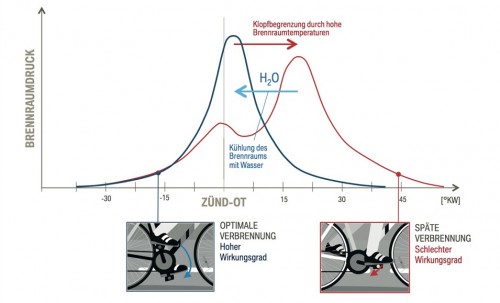
By analogy to pedaling, in good pedal position, earlier peak pressure increases engine efficiency. Power rises 8 to 16 percent and fuel consumption drops two percent
Water injection was much more than just tuning aircraft engines during II. because more power was a matter of life and death. A stronger plane climbs faster, accelerates, reaches higher altitudes, comes in a favorable position to win, can escape. Also important when taking off with a full load of weapons and fuel. Already in 1942, Americans and Germans began experimenting, injecting a mixture of water and methanol, which increases the octane value of the fuel (has an OB greater than 110) and prevents frostbite.
Because, like any extreme tuning, it shortens engine life, the Germans, due to incomparably less resources than the Americans, calculated until June 1944 and Day D. Then the Daimler-Benz DB605 V12 of the Messerschmitt Bf 109 G-10 Erla fighter was fitted with the MW50 system. (methanol-water), increasing power to 2000 hp. On, the Americans have been successfully using this technology for more than a year, and the water injection of the Republic P-47 Thunderbolt has turned it into the deadliest fighter II. world war.
IMPORTANT
- Republic P-47 Thunderbolt is 30.7.1943. took off in an 18-cylinder Pratt & Whitney R-2800 Double Wasp, water-methanol injection boosted from 2000 to 2300 hp
- The Saab 99 Turbo was the first in Europe in 1978 to be boosted from 145 to 160 hp by injection of water. The world's first was the 85 Oldsmobile F1962, with Fluid Injection Jetfire
- Renault RE30C bi-turbo 1.5 V6. In the 1983 season, Alain Prost and Eddie Chever got boosts from 1 to 590 hp by injecting water into a Renault-Gordini EF700 engine
- 'Viagra' also for WRC: after good results in Formula 1, water injection, ie a mixture of hydrogen and methanol since the mid-1980s, is also used in rallies
- Diesels also benefit from water injection, as it reduces the proportion of soot particles and nitrogen oxides (NOx) and increases power by cooling the intake air.
Recommendation of similar texts:

Hi there, I am Mladen and I am an auto enthusiast. I started this blog years ago to help like minded people share information about latest cars, car servicing ideas, used car info, exotic cars, and auto technology. You will find helpful articles and videos on a wide variety of cars - Audi, Mercedes, Toyota, Porsche, Volvo, BMW and much more. Ping us if you have anything cool to share on latest cars or on how to make older cars more efficient, or just want to say hi!

